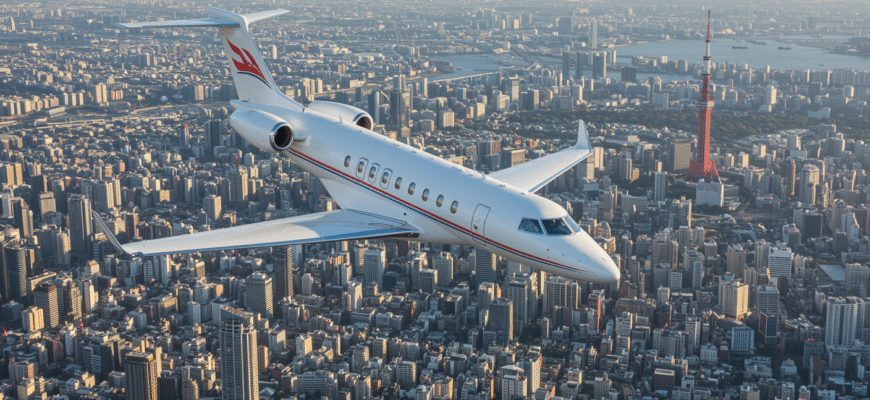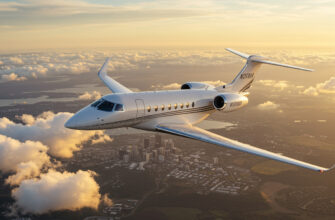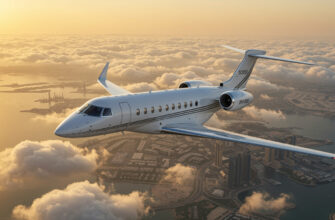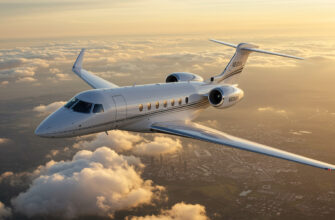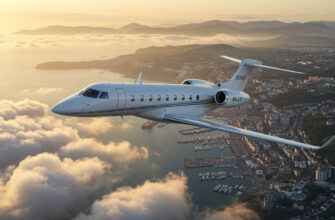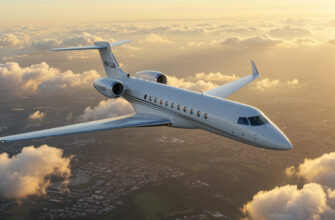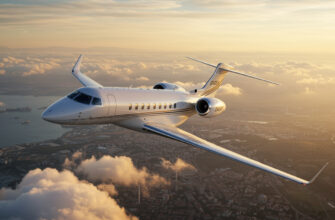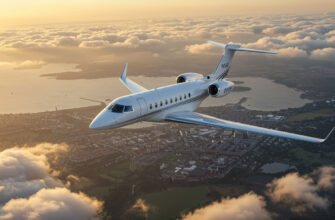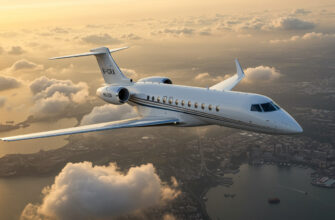Flying private in or out of Tokyo isn’t just another business expense or luxury escape. It’s part of a finely tuned machine—one where timing, access, and discretion matter more than the champagne onboard. Here, speed isn’t just requested; it’s expected. Privacy isn’t a perk; it’s the baseline. And every request comes wrapped in measurable precision. Whether it’s sushi rolled at 40,000 feet or avoiding paparazzi at the tarmac, Tokyo’s private aviation operates like a high-stakes chess game, with every move calculated. It’s not just a flight—it’s entrance strategy, brand protection, and tactical choice all rolled into one.
The Private Jet Reality In Tokyo — Fast, Flawless, And Fiercely Competitive
Tokyo isn’t built for waiting or explaining. The moment a private jet request is filed, everything goes into motion. Top-tier charter companies can have a jet airborne in 60 minutes—crew prepped, customs cleared, ground transport arranged. That kind of speed? It’s normal here. The reason? Stakes are sky-high.
Execs fly in for 90-minute board meetings that decide nine-figure deals. Celebs drop in for 24-hour brand shoots or R&R before tour launches. Every detail—from black car transfers to fresh-from-Tsukiji sushi onboard—is executed without a hitch. These flights are more than just movement across skies—they’re extensions of image and influence.
The privacy Tokyo’s jet crowd demands isn’t optional. Bodyguards, locked-down hangar spaces, pre-planned photo exits—every precaution exists to keep the public at bay. A single blurry image can undercut an IPO or leak a surprise performance. High-risk logistics are constant undercurrents: rerouting due to security threats, changing airports mid-flight, or adjusting for a typhoon forecasted six hours out.
Right now, who’s touching down in Tokyo via jet? It’s almost never who you’d guess. Political delegations arrive cloaked in generic Gulfstreams. K-pop idols and Grammy winners land at dusk in midsize jets that wouldn’t raise eyebrows. CEOs of Fortune 500s skip premium cabins for their own cabins—ones with conference rooms and encrypted comms. Even families looking for a quiet ski getaway charter in just to avoid the cameras.
The Route Most People Miss — Airports Beyond Haneda And Narita
Most travelers only know Haneda and Narita. But insiders lean on airfields farther from the spotlight—where landings are quiet, permits are faster, and barely anyone’s watching. Shimofusa and Chofu are the real MVPs in Tokyo’s private jet scene.
- Shimofusa Air Base: It’s not flashy—but it’s clean, fast, and discreet. It’s the go-to pick for dedicated crews who know Tokyo’s undercurrent. Perfect for those avoiding paparazzi at Narita.
- Chofu Airport: Small and efficient. Think regional-level entry with just enough runway to satisfy luxury propjets and light jets. Entry-level in vibe, but loaded with local logistics pros who get things done—fast.
- Prefectural airfields like Ibaraki and Iruma: Further out, but gaining momentum. Their quiet terminals, lack of slot congestion, and minimal customs hold-ups attract the crowd that hates red carpets and flashing cameras.
These spots have distinct upsides:
- Lower air traffic—no waiting in long queues like at Haneda
- Easier approval for landing slots and flight paths
- VIP ground transport waiting right on the tarmac
- Minimal customs detention—and in some cases, custom agents come to you
Of course, it’s not all smooth sailing:
| Downsides | What It Means |
|---|---|
| Locational distance | These airports sit far from central Tokyo—expect longer drive times post-landing |
| Limited infrastructure | No five-star lounges or commercial-grade repair services; more DIY |
Still, for many high-profile travelers, anonymity and speed outweigh the drive.
The Slot Scramble At Haneda — And Why It’s A Bloodsport
If you land at Haneda, you’ve either pulled strings or paid well—maybe both. It’s the crown jewel for Tokyo-bound jets, and everyone wants a piece. Only 14 kilometers from downtown, the airport’s business terminal is as close to the urban heartbeat as it gets. And that makes slot access brutally competitive.
Brokers play serious games with booking schedules. ‘Ghost reservations’—where phantom flights are booked to hold primetime slots—aren’t unheard of. There are whispers of handlers camping refresh portals at 3AM just to grab last-minute windows.
Why so intense? Because VIPs don’t wait. That 8:15 AM arrival for a closed-door negotiation? That’s not shifting. Brokers who can’t lock a slot in time might lose long-standing clients. Those who nail it unlock loyalty—and bragging rights.
At Haneda, the runway might be made of concrete, but the real battles happen online and over calls, in back channels and tight negotiations far from the tarmac.
In the Air — From Midflight Sushi to Full Boardrooms at 40,000 Feet
What do ultra-rich flyers actually eat when they’re flying private to Tokyo? And can you really run a board meeting while tearing through the clouds over Hokkaido?
Let’s start with the obvious: meals on these jets don’t come in foil trays. Some charters leaving Tokyo feature sushi so fresh it’s flown directly from Tsukiji seafood market, prepared midair by chefs trained under Japan’s strictest culinary schools. It’s not a fantasy—clients have been known to request omakase menus from Nobu or even rare collaborations with chefs trained by Sukiyabashi Jiro. The entire meal service is coordinated to land mid-bite between turbulence swells and time zone adjustments.
Then there’s the flying boardroom. Forget hotel conference rooms—long-range aircraft like Gulfstream G650s and Bombardier Global 6000s get configured with executive suites in the sky. These setups go way past Wi-Fi: think encrypted communication systems, in-cabin translation tools, and noise-dampening panels to protect every whispered pitch deck reveal.
Japan’s business culture isn’t lost in translation up there, either. Seating plans follow seniority. Bowing on camera is still expected during in-flight video calls. Coordinators brief execs before boarding, ensuring protocol’s followed, even at 40,000 feet. Nothing is left to chance—not the sushi, and definitely not your rank in the pecking order.
Ground Prep and Bureaucratic Backflips — Permits, Paper Trails, and the Wait
Getting clearance to fly private over Tokyo isn’t just calling in a jet and rolling up. There’s a maze of pre-flight prep that isn’t on the luxury brochure.
For instance, using a drone to capture skyline shots or dramatic descent footage seems like a no-brainer—until you realize Tokyo’s no-fly rules make this a months-long ordeal. Every drone permit for urban flight needs government approval, and most applications get delayed or denied unless you’ve got the paperwork—and the connections—to muscle through.
Now let’s hit the hour before takeoff, where everything kicks into overdrive:
- Crew scrambles—pilots reviewing weather, routes, runway slot availability
- Luggage gets scanned like at any high-level security check—no taking chances
- Medical clearances are sometimes needed, especially on long-haul flights with older or high-profile clients
- Customs officials pre-clear documents, visas, and fast-track immigration
Weather briefings sync up with slot time approvals. If flying from Haneda, there’s also the hunt for a standby slot—without it, you’re in limbo, privately or not. This is why having an experienced local handler is gold—they know who to call, how to push things through, and when to pull the plug if something smells off.
Efficiency Masquerading as Indulgence — The Illusion of Effortless Luxury
It looks like over-the-top luxury. It feels indulgent. But behind the veils of silk slippers and private onsen-style showers at Narita’s VIP lounges, there’s another mission: not wasting a second.
From ultra-fast ‘street-to-seat’ transfer times to flights booked and airborne within sixty minutes, the entire system orbits around shaving down friction. It’s oxygen for those who trade in time, not just status. Think noise-canceling suites that double as zero-distraction workspaces. Cabin crews trained to serve without small talk. Interpreters booked to appear just when needed, not a second early. Every detail’s scripted to protect silence, pace, and invisibility.
Privacy’s not a perk—it’s the currency. And if Tokyo has mastered anything in the jet game, it’s turning indulgence into an operational tactic.
